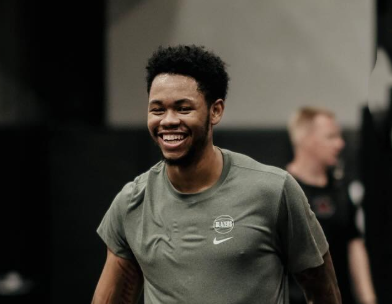The journey of Anfernee Simons from high school sensation to NBA pivotal player is reminiscent of a case study in contemporary sports economics. He skipped college and joined the league right out of Orlando’s Edgewater High, a move that was a testament to his confidence and ability. He became a player whose salary would reflect a carefully cultivated mix of talent and durability after Portland selected him with the 24th pick in the 2018 draft.
In addition to giving him an incredible average yearly salary of $25 million, the four-year, $100 million contract he signed in 2022 demonstrated his franchise’s faith in him. His base salary is set at a career-high $27.7 million for the 2025–26 season, which represents a new level in his professional earnings trajectory.
| Name | Anfernee Tyrik Simons |
|---|---|
| Birth Date | June 8, 1999 |
| Age | 26 (as of 2025) |
| Birthplace | Altamonte Springs, Florida, U.S. |
| Height | 6’3″ (1.91 m) |
| Position | Shooting Guard |
| Current Team | Portland Trail Blazers |
| NBA Draft | 1st Round, 24th Overall, 2018 |
| High School | Edgewater High School (Orlando, FL) |
| Professional Career Start | 2018 |
| Current Contract Value | $100,000,000 over 4 years |
| Average Annual Salary | $25,000,000 |
| 2025–26 Base Salary | $27,678,571 |
| Guaranteed Money | $100,000,000 |
| Career Earnings to Date | $82,363,020 |
| Residence | Portland, Oregon |
| Vehicle | Mercedes-GLS Class SUV |
| Philanthropy | Be A Light Inc. (youth empowerment foundation) |
| @anferneesimons |
That was by no means an arbitrary contract. Performance served as its foundation. Simons recorded career-high numbers in the 2022–2023 season, averaging 21.1 points, 2.6 rebounds, and 4.1 assists per game, with shooting percentages of 44.7% overall and 37.7% from three-point range. Portland saw him as a franchise cornerstone because of his consistency and efficiency as a scorer, particularly after they traded veteran Damian Lillard and turned the page to a new era.
Simons’ deal aligns with a growing trend in NBA salary calculations: making significant investments in players’ development before they demand maximum deals. Teams can acquire high-upside talent on controlled but significant contracts thanks to the soaring revenues from media rights and international expansion. In that regard, Portland’s decision to sign Simons for a deal below the maximum is remarkably sane.
Simons is a restrained leader off the court. A quieter kind of success, he lives in Portland, drives a unique Mercedes-GLS, and avoids ostentatious displays. His modest way of living fits in well with his charitable work. Simons uses his earned wealth to inspire others by directing resources toward underprivileged youth through community events, mentorships, and scholarships through Be A Light Inc., which is named after his great-grandmother Altheus Lightford.
As of 2024, Simons’ estimated net worth ranges from $15 to $20 million. Due to future contract negotiations and disciplined lifestyle choices, that number is anticipated to rise in the upcoming years. His next contract could be worth up to $200 million if he keeps improving in his current position, making the current agreement particularly reasonable in light of his potential.
His skill on the court keeps improving. He has evolved from a spot-up shooter to a multifaceted playmaker, handling late-game situations and pick-and-rolls with increasing composure and effectiveness. His quiet demeanor is respected by teammates, and coaches admire his basketball intelligence. He is the type of player who thrives on both fan-friendly hype and analytics-driven tactics.
Simons’ circumstances are similar to those of his peers, such as Tyler Herro and Jalen Brunson, who rose through shrewd mid-tier contracts before reaching peak valuation. The seamlessness of Simons’ pay—rather than being overpaid based solely on his promise—is what sets him apart.
Simons is the perfect example of a homegrown star whose cost is justified by impact, branding, and long-term value from the standpoint of franchise building. For supporters, his pay represents more than just a figure; it validates a story of devotion, achievement, and involvement in the community.
Teams that are adept at talent-investment mechanics will be able to stand out as the NBA expands its global reach and explores new media horizons. Simons provides examples of how these investments appear both on and off the court. His $27.7 million yearly salary reflects a player who is not only well compensated but also paid with a purpose, balancing financial gain with cultural resonance.
Younger athletes can learn from his development. Consistency creates legacy, but talent opens doors. Simons’ steady ascent, measured by his on-court appearances, personal expenditures, and community influence, represents a contemporary model of success. He is creating substance piece by piece rather than chasing flash. And that dedication to consistency may turn out to be his greatest strength in a league characterized by ephemeral fame and sporadic spectacle.


